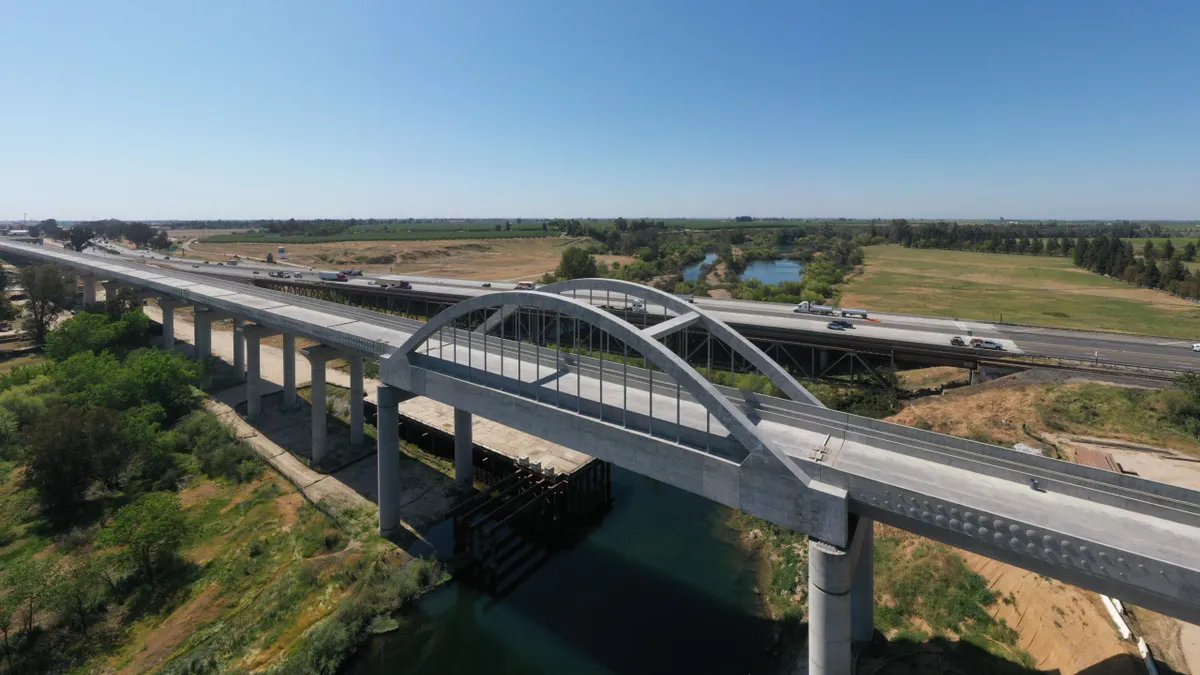Dive Brief:
- State transportation officials tacked on an additional $5 billion to the budget for California's high-speed rail project, according to a 2022 business plan report, bringing the total projected cost to $105 billion.
- That $5 billion increase is due to distancing the train from the Cesar E. Chavez National Monument in the Central Valley and tunneling tracks near Burbank airport, according to the Associated Press. The completed 500-mile high-speed system will run between Los Angeles and San Francisco.
- The high price of the project, which ballooned from its original $40 billion estimate in 2008, mirrors an overall trend of costlier rail projects in the U.S. when compared to similar or even more complex projects in Europe, according to an analysis by the Eno Center for Transportation.
Dive Insight:
High costs are almost synonymous with rail projects in the U.S., especially in the California region.
That's because costs around healthcare and pensions are incorporated into the direct capital cost of a project, according to the Eno Center report. That differs from some other countries, where nationalized healthcare and pension plans are paid for through general taxation as opposed to employers.
In California, contractors routinely point to the high-methane zones in the underground environment around Los Angeles, another factor that drives up project costs in the area, according to the report.
Along with higher costs, rail projects in the United States take longer to build, too. U.S. projects with minimal tunneling take about six months longer to construct than similar non-U.S. projects, the report said.
That's because U.S. public transit agencies rarely have the structure, authority or experience to deliver a major transit construction project, which requires support from local jurisdictions, the ability to acquire land as necessary, secure local permits to close streets and relocate utilities and flexibility to hire top talent to lead the project.
Many international projects constructed below grade have similar costs to those that are at-grade in the United States. For example, a 9.3-mile-long Metro Line in Toulouse, France, was built entirely underground at a cost of about $176 million per mile while Houston Metro's 3.2-mile-long Green Line is all at-grade and cost $223 million per mile.
"Increased investment in early underground exploration and a stronger design review process with standardized checklists could help curtail a significant amount of the change orders," the Eno Center report said.












